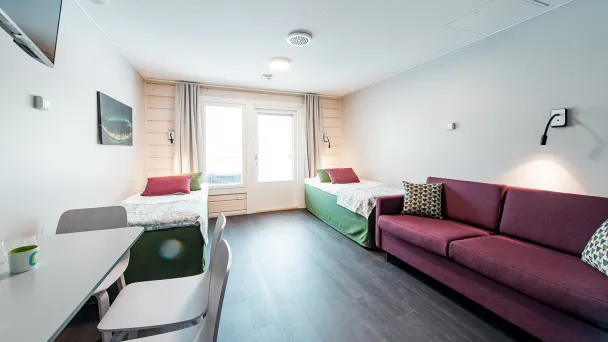The Pajulahti campus is one of the few places in Finland where an athlete or competitive fitness enthusiast can benefit from altitude effects to enhance oxygen transport capacity. A sufficiently long exposure to hypoxia (staying in an altitude room) can increase hemoglobin mass and thus improve aerobic endurance.
High-altitude training stresses the body more than training under normal conditions, and it may involve risks. Therefore, the training background must be intact and strong before the hypoxia period. During exposure, training should be modified and lightened if necessary. Weight loss during the period is not recommended.
Before you come to a high-altitude camp, we recommend that the athlete has a working plan for the altitude period, created in collaboration with experts. Regarding background, a blood test is important to determine red blood cell values, ferritin levels, and the need for iron supplementation.
During the high-altitude camp, it is good to balance the load by sleeping more, increasing carbohydrate intake, and drinking enough. It is advisable to keep the workouts lighter than normal for the first few days. Monitoring load and recovery is recommended, and measuring blood oxygen saturation helps assess the body's adaptation to hypoxia. Daily weighing and monitoring urine color can help prevent energy deficits and dehydration. In addition to iron supplements, antioxidant and immune support supplements may be considered due to higher oxidative stress.
If you want more information about our altitude accommodations or need advice on hypoxia dosing, you can call the altitude on-call service at +358 447755225 or send a message to alppistaff@kolmekampusta.fi. For reservations, please contact our sales representative Jaakko Erkinheimo (tel. +358 447755215, jaakko.erkinheimo@kolmekampusta.fi).
Training opportunity in the altitude training room
Based on research evidence, you can prolong the responses brought by the hypoxia period by training at altitude (approx. 1-2 times/week, 1 hour at a time) after the hypoxia period. The altitude training room can be utilized for this purpose, which is equipped with a variety of cardiovascular equipment: a Woodway treadmill (22 km/h; incline 0-15%), Gymstick Pro double-push ergometer, Wattbike cycling ergometer, and a spinning bike. The training room can be reserved for one person at a time for 1-2 hours.

